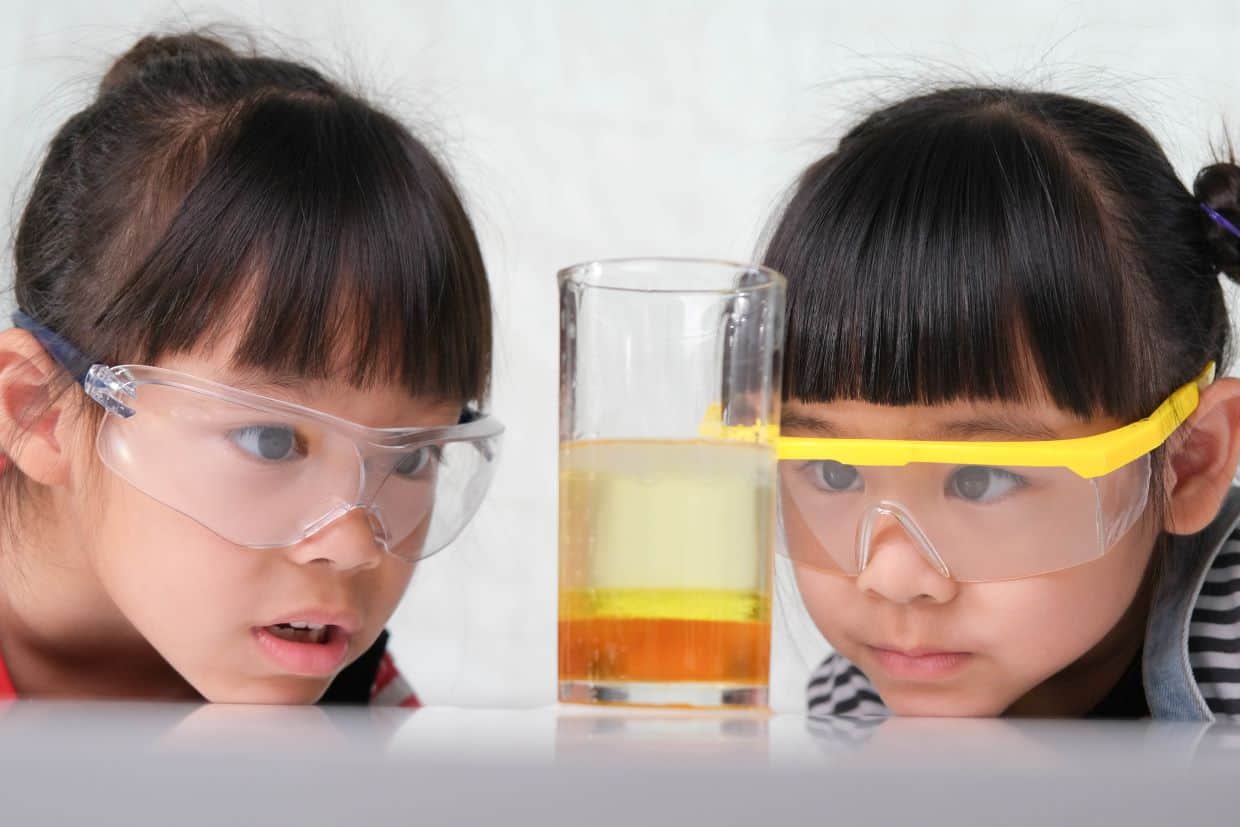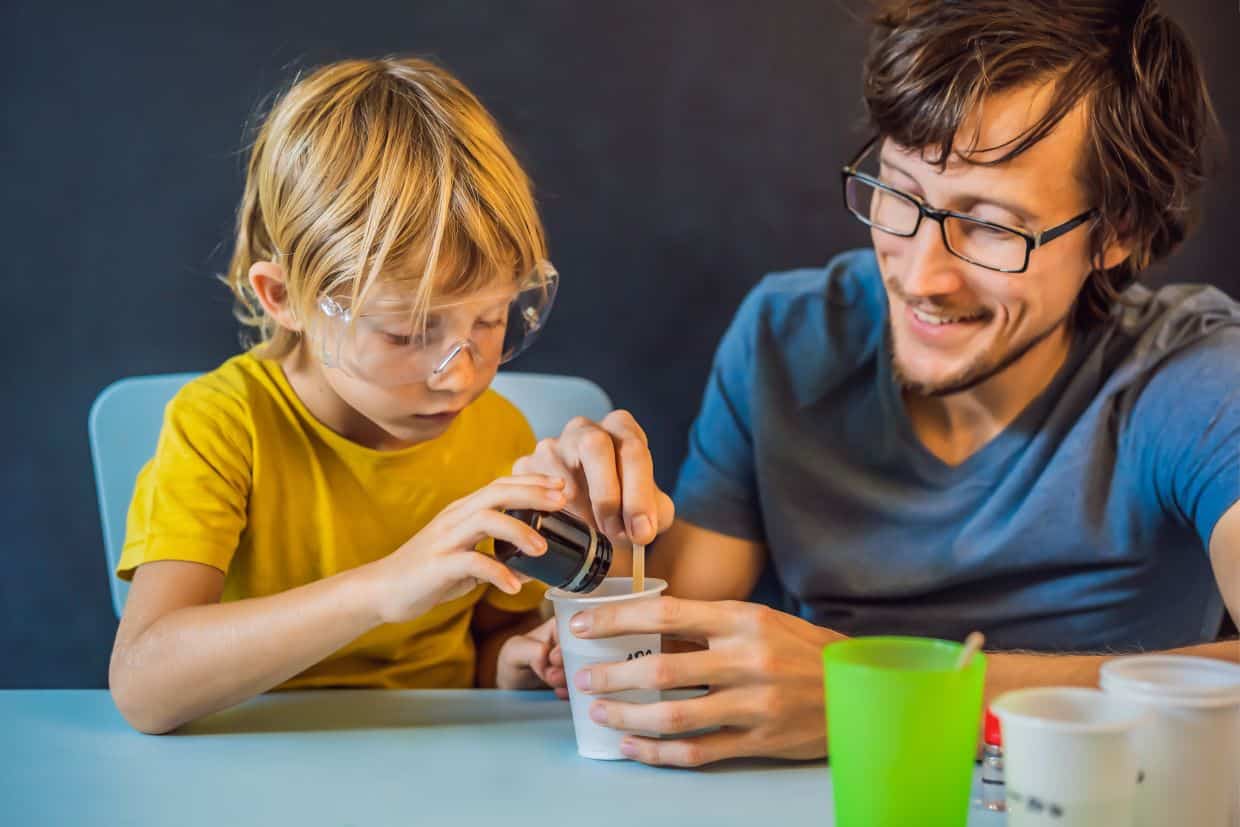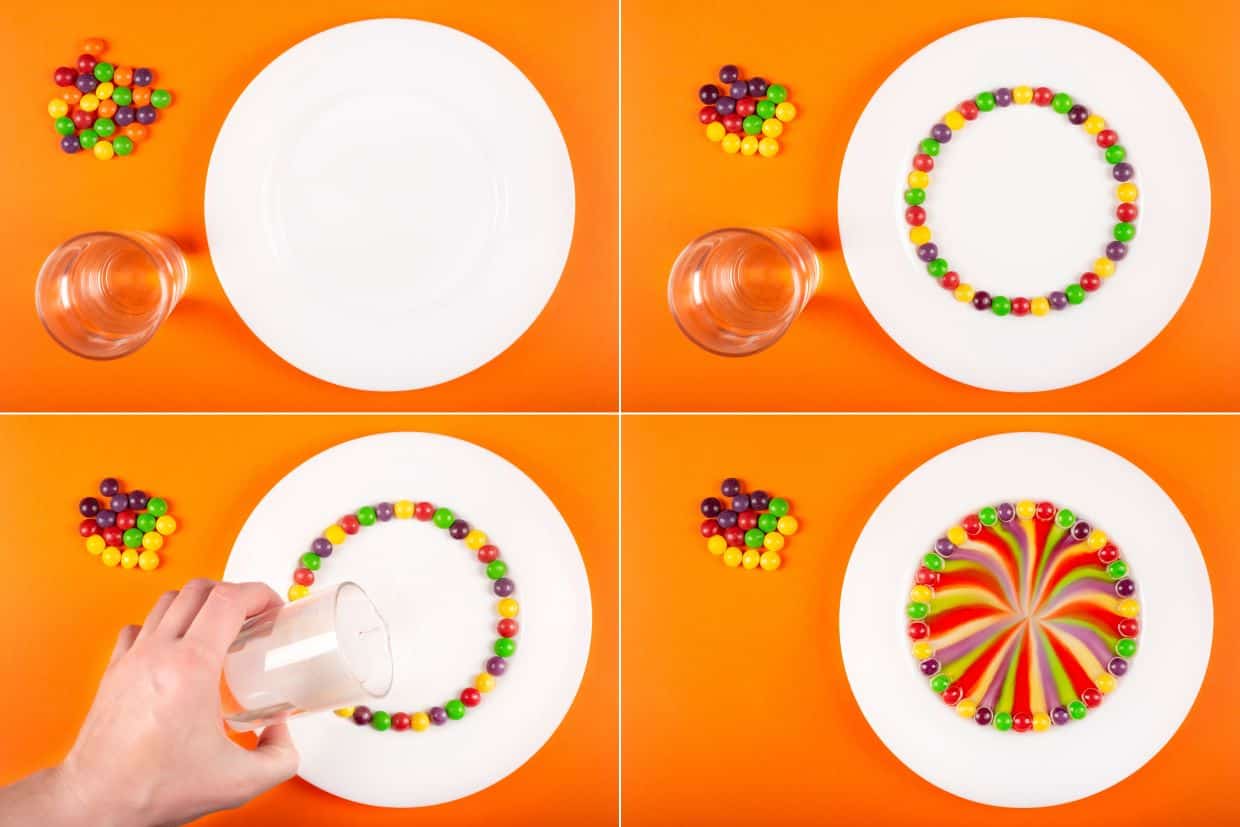If you are tired of hearing that your children are bored, why not try doing some science experiments for kids? Science experiments can be messy, but that is what makes them fun.

Whether you’re looking for things to do in the summer or you need to keep busy while cooped up in the winter, science is an easy way to keep kids entertained. The best part? They are learning and may not even realize it.
Benefits of science at home
Your kids probably attend a school where they are taught science, so why should you do science at home?
- Science helps children learn to ask questions and solve problems.
- It allows children to be creative and use their imagination.
- Science helps children develop empathy by becoming more aware of how their actions might affect the world.
- It helps them develop critical thinking skills.
- Science is fun.
Safety tips
Science is fun, but it is also important to stay safe. Depending on the experiments you are doing, you should follow some safety protocols.
- Make sure kids are supervised.
- Goggles may be needed if chemicals are involved.
- Wear gloves to protect hands.
- Wear an apron or old t-shirt to protect clothes.
- Do not sniff anything directly, but instead, waft the air toward your nose with your hand.
Science experiments to try
No matter which experiments you decide to do with your kids, make it a fun learning experience for them by offering choices where appropriate. Here are some fun experiments that kids love.
Sink or float
Sink or float explores the concept of buoyancy. Which objects float on water and which objects float? What makes an object float? Have children sort the objects into two categories: sink and float.
Materials needed:
- A large container filled with water
- Objects that float such as: pencil, crayon, Lego, bath toy, etc.
- Objects that sink such as: coins, metal utensils, toy cars, dry pasta, etc.
- Towel to wipe up spills
Oobleck
Oobleck is a non-Newtonian liquid because it feels solid when squished between your fingers and turns back into a liquid when the pressure is released.
Materials needed:
- 2 cups cornstarch
- 1 cup water
- Mixing bowl
Directions:
- Add the cornstarch to the mixing bowl.
- Add the water to the cornstarch slowly while mixing. Stop when you reach the right consistency.
- Stir the mixture together with a spoon or your hands.
Egg drop
“My favorite science experiments to do with my kids are the ones that encourage creativity and critical thinking. The classic egg drop experiment is always a hit. Give the kids a few simple household supplies like some straws, paper clips and a few sheets of paper. Challenge them to create a device that will protect a raw egg when it is dropped to the ground and see what they come up with. It is simple, inexpensive and lots of fun.”
— Anne Jolly, Upstate Ramblings.
Celery experiment
The celery experiment is fun and visual. It shows kids how plants absorb water through osmosis.
Materials needed:
- Clear jars or cups
- Fresh celery stalks with leaves (the lighter in color, the better)
- Water
- Food coloring
Directions:
- Separate and select stalks of celery with leaves. Cut about half an inch off the bottom.
- Put about one cup of water in each clear jar or cup.
- Drop three to four drops of food coloring in each clear jar or cup.
- Place one stalk into each jar or cup and use the stalk to stir gently until the color is distributed evenly.
- Check after three hours, 24 hours and 48 hours.
- Cut off the bottom to see where the water went up the celery stalk.

Tornado in a bottle
A tornado in a bottle is an easy way to learn about water vortexes and how tornadoes form.
Materials needed:
- Water
- Dish soap
- Tall, narrow bottle, like a 2-liter soda pop bottle or smaller
Directions:
- Fill the bottle three-quaarters full with water.
- Add a drop of dish soap.
- Cover tightly.
- Shake the bottle with the roll of your wrist and watch what happens.
“I love doing kitchen science experiments with kids. One of my favorites is giving each kid a large bowl and a whisk and then adding cream and a little sugar. See who can get their cream thick enough to stay in the bowl first. Test it by holding the bowls upside down over the kids’ heads, which always gets a lot of giggles. Other fun kitchen science experiments are making rock candy, turning lemonade purple with butterfly pea flowers or making a water bottle volcano with baking soda.”
— Robin Donovan, All Ways Delicious
Soda explosion
This soda explosion is created by combining Diet Coke and Mentos. The combination of two delicious ingredients creates a chemical reaction that kids love to watch. It is messy, so be sure to do this one outside and stand back.
Materials Needed:
- Two liter bottle of Diet Coke
- Two rolls of Mentos mints
- One piece of 8-by-10 inch construction paper
- Tape
Directions:
- Remove the lid from the bottle of Diet Coke and set the bottle on a flat surface.
- Roll the construction paper into a tube around a pack of Mentos mints. Tape it together and pull it off the roll of mints.
- Hold your finger over one end of the paper tube and have your child fill the tube with Mentos mints. Make sure the paper isn’t bent so the mints will easily slide out when you remove your finger.
- Hold the tube of mints over the mouth of the bottle. Count down from ten. When you say, “one,” quickly remove your finger from the tube and let the mints fall into the bottle. Get out of the way as quickly as possible.
Skittles experiment
The Skittles experiment teaches kids about diffusion. Watch how Skittles make a rainbow when warm water touches them.

Materials needed:
- A bag of Skittles
- Warm water
- A plate
Directions:
- Place the Skittles in a circle on the outer rim of the plate.
- Slowly pour warm water into the middle of the plate so the candies are half submerged.
- Watch as the colors from the Skittles slowly start to make their way to the middle of the plate.
Final thoughts
At-home experiments are a fun and easy way to get kids interested in science. Most science experiments can be done with materials you already have and are relatively cheap to do.
Doing science at home is a great way to encourage critical thinking, problem solving and exploration. You never know, maybe you are raising a future scientist.
Heidi is a Certified Elementary School Teacher in the Inland Northwest and has been teaching for 17 years. She is also a vintage recipe blogger at RealLifeofLulu.com, where she focuses on recipes that are at least 50 years old, many from her grandparents’ kitchens. When she isn’t teaching or baking, she loves spending time with her husband and three kids.